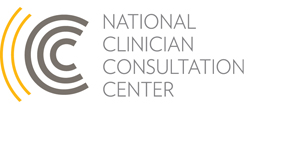Case of the Month: Pediatric ARV Regimen Selection
Case Summary
A pediatrician calls the CCC about a three-year-old HIV-positive boy recently adopted from Ethiopia who recently immigrated to the U.S. His adoptive parents told the pediatrician that they’d received zidovudine/lamuvudine/nevirapine bottles from the orphanage, but are unclear as to whether the boy was regularly receiving antiretrovirals (ARVs). Currently, the child is not taking medications. He is slightly malnourished and weighs 12.2 kilograms. His chest X-ray is normal and his rapid plasma regain (RPR) is negative. He has normal electrolytes and kidney function and was treated for a giardia infection upon arrival in the U.S. An HIV genotype drawn after his arrival revealed the following pattern:
RT- 67N; 70R; 103N; 181C; 184V; 215D/F/V/Y; 219Q
Pro- multiple polymorphisms
The caller asks the CCC consultant about the best regimen to implement for the child now.
CCC Consultant Advice
Given broad resistance to the NRTI class and the first-generation NNRTIs, a potent subsequent approach is a three-class drug regimen of two NRTI + boosted PI + INSTI, such as tenofovir (TDF) + lamivudine (3TC) + lopinavir /ritonavir (LPVr) + raltegravir (RAL). Tenofovir should still have good activity given the NAM pathway identified (67N, 70R). Since the patient has never been exposed to the PI and INSTI classes, he will have full activity from those components of this proposed approach. The proposed regimen of TDF+ 3TC+ LPVr+ RAL would net between two to three active agents.
The child’s tenofovir dosing should be 100 mg once daily (2.5 scoops of 40 mg/G powder). The lamivudine oral solution dosing should be 4 mg/dose twice daily. Given the patient’s low weight, it is recommended to use a lopinavir/ritonavir solution (230 mg/m2/dose given twice daily). His raltegravir dose should be 75 mg (3 x 25 mg chewable tablets) twice daily. The proposed regimen requires careful dosing with multiple formulations (liquids, powders, and tablets). As such, the child’s primary medical doctor is encouraged to work closely with the parents and pharmacy to ensure that the pediatric dosing is accurate and to adjust the doses as the child grows. The caller was encouraged to follow up with CCC for further consultation regarding alternative regimens should this regimen not work out due to factors such as significant side effects or infeasibility of administration.
Find more information on pediatric ARV dosing in the Pediatric ARV section of our HIV/AIDS Guidelines library.
Because CCC consultations are based on information provided by the caller or clinician accessing the online consultation center, without the benefit of a direct evaluation or examination of the patient, consultations are intended to be used as a guide. They do not constitute medical advice and are not to serve as a substitute for medical judgment. This Case of the Month includes consultation based on the most up-to-date evidence at the time of its publication. To learn about current recommendations, please call one of our clinical consultation lines.
 University of California, San Francisco |
University of California, San Francisco |
